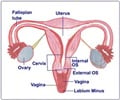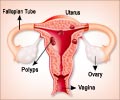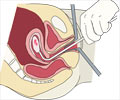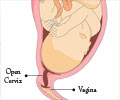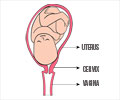Dilatation and Curettage - Procedure
Dilatation and Curettage (D&C) involves a gradual dilatation of the cervix to facilitate the curetting of the uterine cavity.
The actual procedure is done in a sterile environment such as an operating room, either in a hospital, a surgical center, or in a specially designated room in a physician's office.
- After adequate anesthesia has been administered, the patient’s legs are parted and flexed and comfortably put up on a stirrup in a position that is called the 'lithotomy' position. This ensures a good view of the genital area for the surgeon or gynecologist to operate.
- The vagina and cervix are scrubbed with an antibacterial solution that maybe iodine or alcohol based.
- The cervix is visualized using an instrument that is located in the vagina called the speculum. Lights are so adjusted to visualize the cervix so that its upper lip can be grasped with a special curved forceps called the ‘Vulsellum’. This helps both in stabilizing and bringing the cervix down towards the vaginal opening to ease with rest of the procedure.
- Dilatation is next done using sequential metal round tapered dilators and the opening to the uterus is gradually widened to about the size of a large pencil.
- Once this dilatation has been completed, the spoon like curette is inserted into the uterine cavity and is used to gently scrape the lining of the uterus.
- When the surgeon feels the gritty layer of cells just above the muscle of the uterus, then he/she knows that the scraping has gone deep enough to sample the tissue adequately.
- This scraping is done throughout the uterus and the tissue that is removed is then sent to a pathologist for microscopic examination.
- Depending on the indication for the procedure the surgeon terminates the procedure once he feels that enough tissue has been obtained, or that the entire cavity has been sampled or scrapped.











